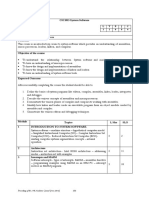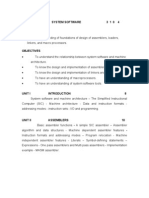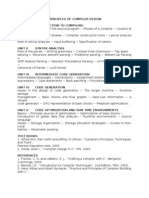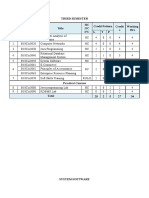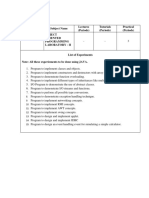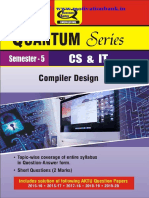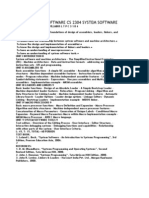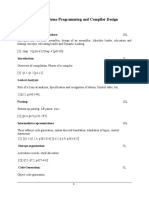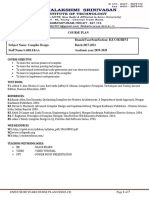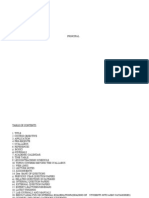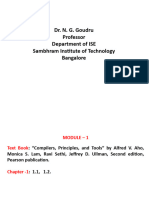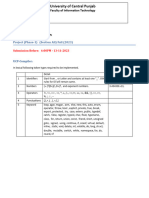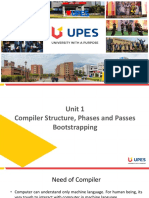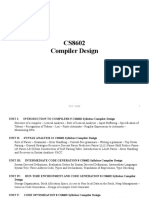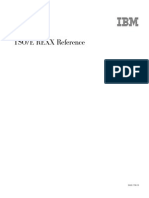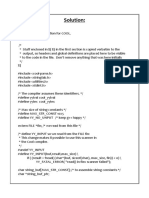0% found this document useful (0 votes)
30 views2 pages15csc13 System Software and Compiler Design
The document outlines the objectives and structure of the course 'System Software and Compiler Design', focusing on assemblers, linkers, loaders, code generation, optimization, and virtual machines. It details the course units, including topics such as lexical analysis, parsing, intermediate code generation, and the architecture of virtual machines. The document also lists the expected outcomes for students and provides references and textbooks for further reading.
Uploaded by
Cse HodCopyright
© © All Rights Reserved
We take content rights seriously. If you suspect this is your content, claim it here.
Available Formats
Download as DOCX, PDF, TXT or read online on Scribd
0% found this document useful (0 votes)
30 views2 pages15csc13 System Software and Compiler Design
The document outlines the objectives and structure of the course 'System Software and Compiler Design', focusing on assemblers, linkers, loaders, code generation, optimization, and virtual machines. It details the course units, including topics such as lexical analysis, parsing, intermediate code generation, and the architecture of virtual machines. The document also lists the expected outcomes for students and provides references and textbooks for further reading.
Uploaded by
Cse HodCopyright
© © All Rights Reserved
We take content rights seriously. If you suspect this is your content, claim it here.
Available Formats
Download as DOCX, PDF, TXT or read online on Scribd
/ 2






